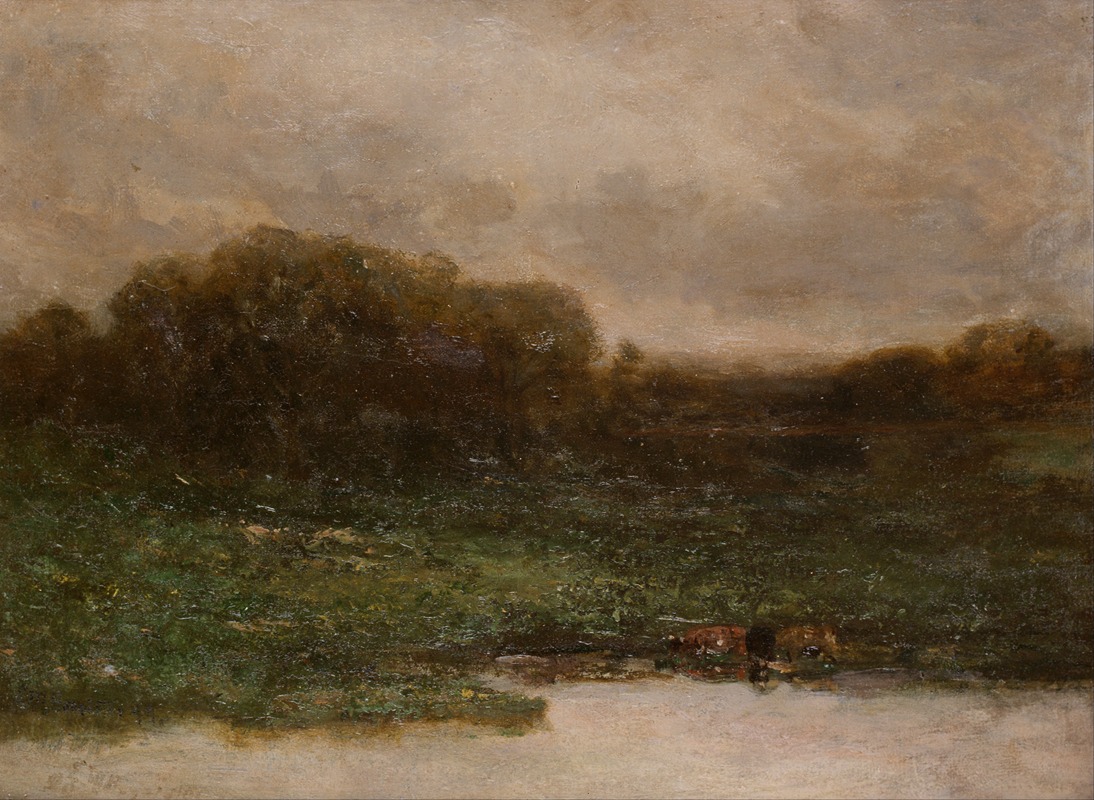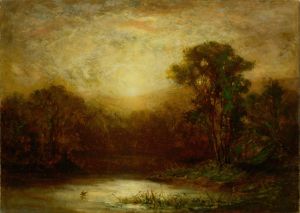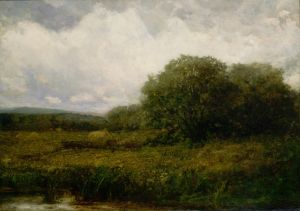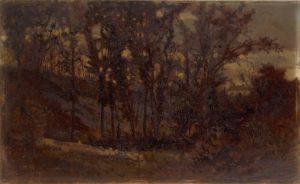
Summer Twilight
A hand-painted replica of Edward Mitchell Bannister’s masterpiece Summer Twilight, meticulously crafted by professional artists to capture the true essence of the original. Each piece is created with museum-quality canvas and rare mineral pigments, carefully painted by experienced artists with delicate brushstrokes and rich, layered colors to perfectly recreate the texture of the original artwork. Unlike machine-printed reproductions, this hand-painted version brings the painting to life, infused with the artist’s emotions and skill in every stroke. Whether for personal collection or home decoration, it instantly elevates the artistic atmosphere of any space.
Edward Mitchell Bannister (1828–1901) was a prominent African American artist associated with the 19th-century American landscape painting tradition. His work often reflected the influence of the Barbizon School, a movement that emphasized naturalistic depictions of rural landscapes and a focus on light and atmosphere. Bannister's paintings are celebrated for their poetic and serene qualities, as well as their technical mastery.
One of Bannister's notable works, Summer Twilight, exemplifies his skill in capturing the subtleties of light and mood in nature. Painted in the late 19th century, the artwork portrays a tranquil rural scene during the twilight hours of a summer evening. The composition features a harmonious interplay of soft, muted colors, with warm tones suggesting the fading light of day. Bannister's brushwork is fluid and expressive, creating a sense of movement and depth in the landscape.
Summer Twilight reflects Bannister's dedication to portraying the beauty of the natural world. His work often avoided dramatic or grandiose subjects, instead focusing on the quiet, everyday moments in nature. This approach aligned with his belief that art should evoke a sense of peace and spiritual connection. Bannister's landscapes, including Summer Twilight, are often described as lyrical and meditative, inviting viewers to pause and reflect.
Bannister's career was marked by significant achievements despite the racial barriers he faced as a Black artist in 19th-century America. In 1876, he gained national recognition when his painting Under the Oaks won a first-place medal at the Philadelphia Centennial Exposition. This accomplishment solidified his reputation as a talented and respected artist. Bannister was also a founding member of the Providence Art Club in Rhode Island, where he lived and worked for much of his life.
While specific details about Summer Twilight—such as its exact date of creation or current location—are not widely documented, the painting remains an important example of Bannister's artistic legacy. His work continues to be celebrated for its contribution to American art history and for challenging the racial prejudices of his time.
Edward Mitchell Bannister's dedication to his craft and his ability to capture the essence of nature have secured his place as a significant figure in the history of American art. Summer Twilight stands as a testament to his talent and his vision, offering a glimpse into the serene and contemplative world he sought to depict.


















